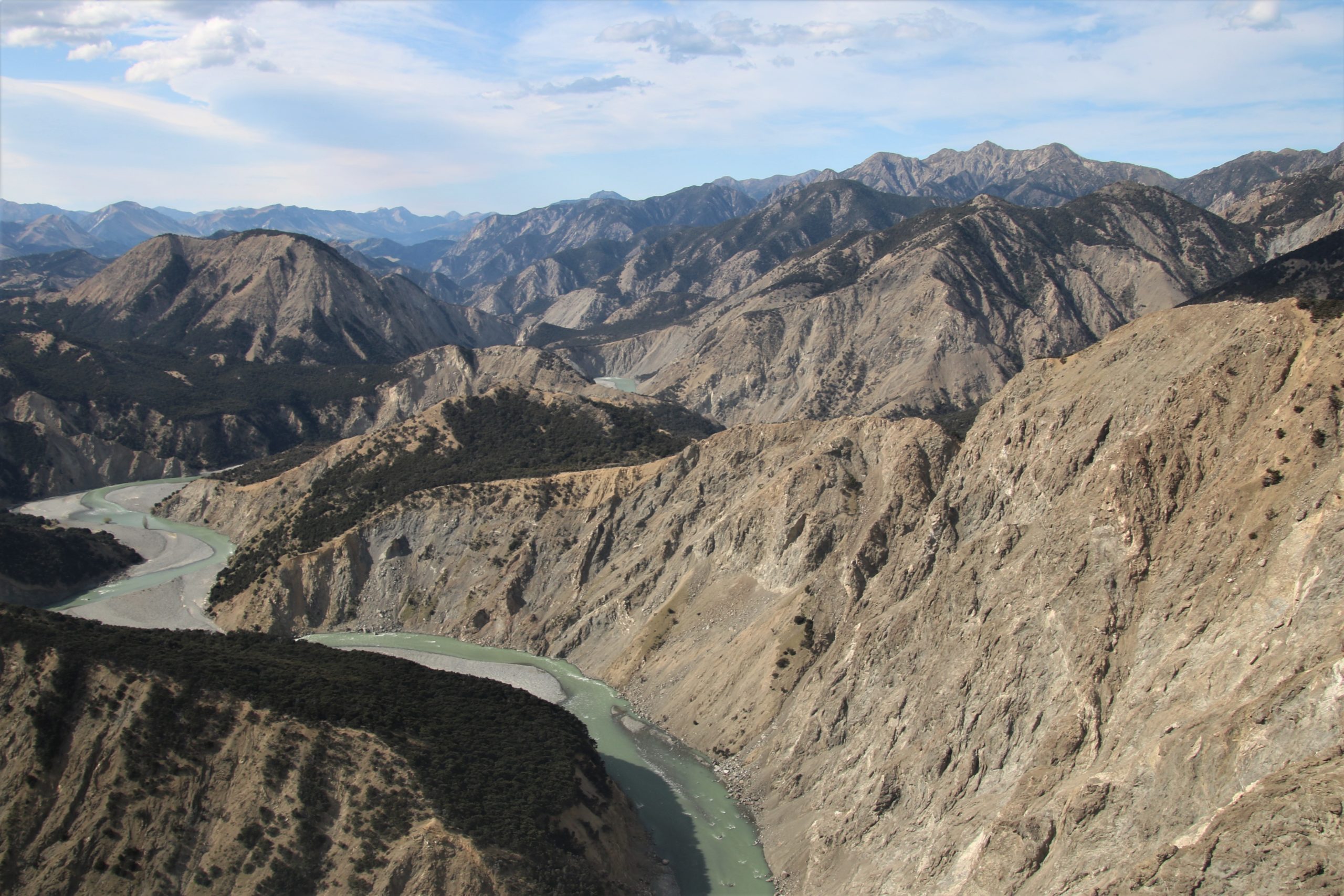10 June 2020
The role of earthquake and rainstorm induced landslides in shaping mountain chains
Posted by Dave Petley
The role of earthquake and rainstorm induced landslides in shaping mountain chains
Whilst in this blog I tend to focus on landslides that are caused by humans, or that cause harm to people or and/or property, it is important to remember that they mainly occur naturally in the landscape. The role of landslides is particularly important in high mountain chains, where tectonic processes are driving uplift. There is a limit to how high mountains can become, in the first order set by the strength of the rocks of which they are composed (although actually this is somewhat complex). Thus, on the scale of the mountain chain (in time and space), landslides are the process that enables a balance to be reached between uplift and erosion.

The role of landslides in mountain chains: the landscape of the New Zealand.
.
It is well-established that in high, active mountain chains landslides are the dominant process of erosion. But in a paper published in Science Advances (Wang et al. 2020), with a superstar list of authors, the role of different types of landslide has been explored in more detail. In particular, active mountain chains typically experience landslides triggered by two major processes, which we can classify as being meteorological (primarily rainfall) and seismic (primarily high magnitude earthquakes). In the paper, the research team have examined sediments deposited in Lake Paringa in New Zealand, which is located close to the Alpine Fault in the Southern Alps. This is an area that suffers frequent large rainfall events and large earthquakes. The timing of historic earthquakes on the Alpine Fault is very well-constrained.
The research team have looked at organic matter stored in the sediments of the lake, They have shown that the organic matter in soils from high elevations has a different geochemistry from that lower down in the mountain chain. By tracing that geochemical signature in the sediment core they can identify the source of the the material through time. And of course the dominant process that has released that material is landsliding.
The results are really interesting. In the period between earthquakes they found that most of the sediments came from soils at lower elevations in the mountain chain. These are the landslides driven by rainfall. But in the 1,000 year period of the study there were four major Alpine Fault earthquakes, which will have caused extensive landsliding. Immediately after the earthquakes the dominant source of the sediment was landslides at higher elevations. In the post-seismic period the mean elevation from which the sediment was sourced declined with time, and in the inter-seismic periods the dominant source was landsliding at lower elevations. It remained this way until the next earthquake, when the focus source returned to higher elevations in the mountain chain.
This is really neat. The data suggest that earthquakes shape the highest elevations in mountain chains, which rainstorms shape the lower elevations. So the landscape of different parts of the mountain chain are the result of different geomorphological processes occurring at different times.
The results do fit with our understanding of landslide mechanisms. It is well known that earthquake induced landslides tend to extend to the ridge crests because of the process known as topographic amplification – basically the seismic shaking is more intense at high elevations. On the other hand, rainfall induced landslides are primarily the result of high pore water pressures, which of course tends to occur lower in the slope.
This is a clever and insightful study that greatly clarifies our understanding of how mountain processes operate. It is an important contribution. It will be interesting to see if the same observation can be made in other mountain chains.
Reference
Wang, J. et al. 2020. Long-term patterns of hillslope erosion by earthquake-induced landslides shape mountain landscapes, Science Advances DOI: 10.1126/sciadv.aaz6446


 Dave Petley is the Vice-Chancellor of the University of Hull in the United Kingdom. His blog provides commentary and analysis of landslide events occurring worldwide, including the landslides themselves, latest research, and conferences and meetings.
Dave Petley is the Vice-Chancellor of the University of Hull in the United Kingdom. His blog provides commentary and analysis of landslide events occurring worldwide, including the landslides themselves, latest research, and conferences and meetings.
One thing I am missing in that study is that erosion processes and landslides are induced by freeze-thaw-changes as well as by thaw process of permafrost soil and rockmass in high alpine areas round the world. And this occurs in areas without any major earthquake risk.